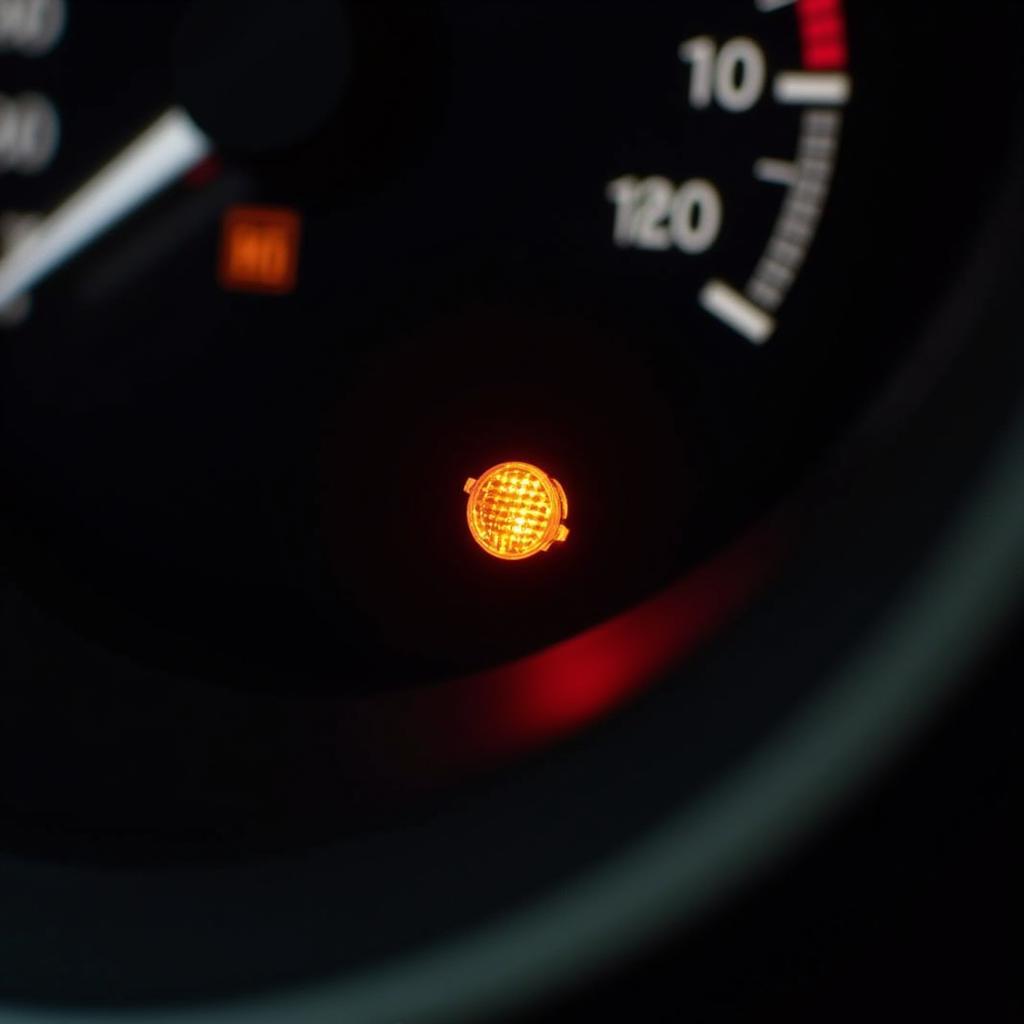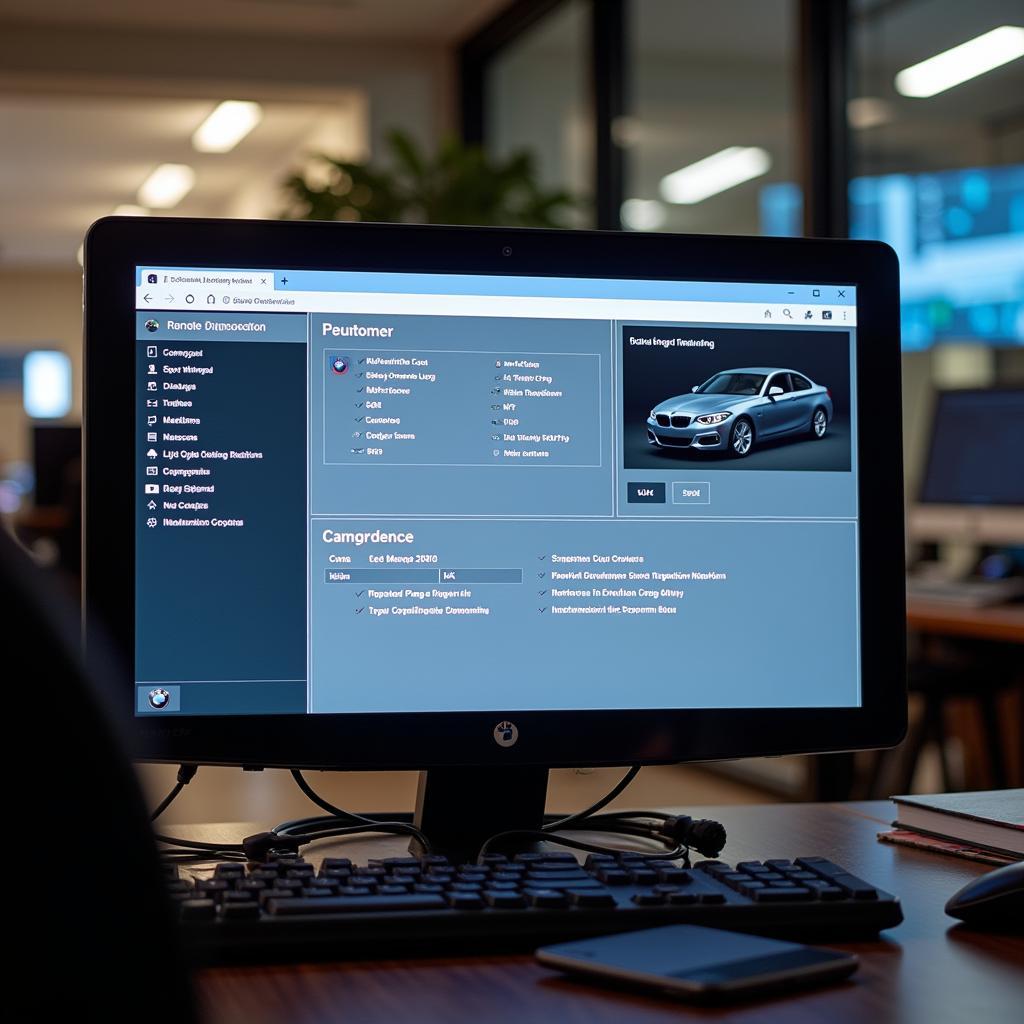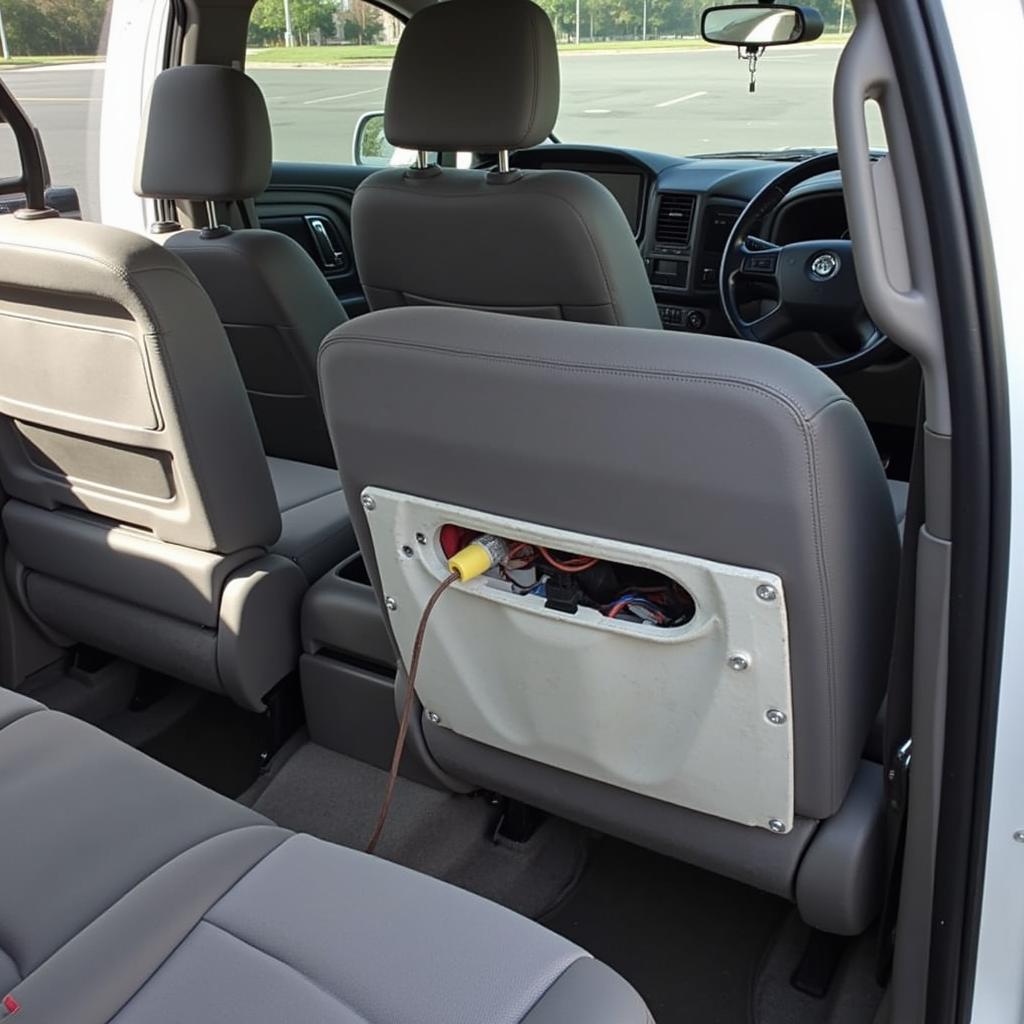The brake system warning light on your BMW is a crucial safety indicator. Ignoring it can lead to serious consequences. This article will help you understand the common causes of the brake system warning light in BMWs and guide you through troubleshooting and potential solutions, including remote diagnostic and programming options.
If your BMW displays a back seat warning, you can find helpful information in resources like the 2015 GMC Sierra back seat warning article. Understanding these systems can improve your overall safety awareness.
Understanding Your BMW’s Brake Warning Light
The brake warning light can illuminate for various reasons, from low brake fluid to more serious issues like worn brake pads or a malfunctioning ABS system. Don’t panic! While the light itself can be alarming, understanding its potential causes can empower you to take the right steps.
Common Causes of the Brake Warning Light
- Low Brake Fluid: This is the most common culprit. Brake fluid naturally depletes over time, and low levels can trigger the warning light.
- Worn Brake Pads: Brake pads have wear indicators that activate the warning light when they reach a certain thickness.
- ABS Issues: A malfunctioning Anti-lock Braking System (ABS) can also trigger the warning light. This could indicate a problem with the ABS sensors, module, or pump.
- Parking Brake Engaged: Sometimes, the warning light simply means your parking brake is still engaged. Make sure it’s fully released.
- Brake Fluid Sensor Malfunction: The sensor itself could be faulty, sending a false signal even if the fluid level is adequate.
 BMW Brake Warning Light on Dashboard
BMW Brake Warning Light on Dashboard
Have you ever encountered a check back seat warning in a Toyota? The principles of warning lights are similar across vehicle brands, indicating potential issues that require attention.
Troubleshooting the Brake System Warning Light
Before rushing to a mechanic, you can perform some basic troubleshooting steps.
- Check the Parking Brake: Ensure the parking brake is fully disengaged.
- Inspect the Brake Fluid Level: Open the hood and locate the brake fluid reservoir. Check the fluid level against the minimum and maximum markings. If it’s low, add the correct type of brake fluid recommended by BMW.
- Visually Inspect the Brake Pads: If you’re comfortable doing so, you can try to visually inspect the brake pads through the wheel spokes. Look for significant wear.
When to Seek Professional Help
If the warning light persists after these checks, it’s time to consult a professional. This is especially true if you suspect an ABS issue. Modern BMWs utilize complex electronic systems, and accurate diagnosis requires specialized equipment.
If you’re dealing with a back seat warning in a 2017 Tahoe, you’ll likely need to consult your owner’s manual or a professional for assistance. Similar to brake system warnings, these alerts require specific troubleshooting steps.
Remote Diagnostics and Programming
Modern technology allows for remote diagnostics and programming of vehicle systems, including brakes. Qualified technicians can access your vehicle’s computer remotely to identify fault codes and even perform software updates or reprogramming. This can save time and money compared to traditional in-person diagnostics.
“Remote diagnostics has revolutionized automotive repair. We can quickly pinpoint issues and often resolve them without the customer needing to bring their car in,” says John Smith, Senior Automotive Diagnostic Technician at CARDIAGTECH.
Benefits of Remote Diagnostics and Programming
- Convenience: No need to visit a repair shop.
- Speed: Faster diagnosis and quicker turnaround times.
- Cost-Effective: Potentially lower costs compared to traditional methods.
- Expert Access: Access to specialized technicians regardless of location.
 Remote Diagnostic Software Interface
Remote Diagnostic Software Interface
Knowing how to turn off a check back seat warning can be important for your peace of mind. Resources like this guide can provide valuable insights.
Conclusion
The brake system warning light in your BMW is a serious safety concern. Understanding its potential causes and knowing how to troubleshoot can help you address the issue promptly. If the problem persists, remember that remote diagnostics and programming offer a convenient and efficient solution. Don’t delay addressing this crucial safety aspect of your BMW.
Do you have a 2019 Chevrolet and need help with a check back seat warning? Specialized resources can offer model-specific guidance for troubleshooting.
FAQ
- Can I drive my BMW with the brake warning light on? It’s strongly advised not to. Driving with a potential brake issue can be dangerous.
- How often should I check my brake fluid level? Check it at least once a month or as recommended in your BMW owner’s manual.
- How much does it cost to replace brake pads? The cost varies depending on the model and the type of brake pads used.
- What is the difference between regular and ABS brakes? ABS prevents wheel lockup during hard braking, improving control and stability.
- How often should I have my brake system inspected by a professional? It’s recommended to have your brakes inspected annually or as recommended by BMW.
- Can remote diagnostics fix all brake problems? While remote diagnostics can identify many issues, some problems may still require physical repair.
- Is remote programming safe for my BMW? Yes, when performed by qualified technicians using approved software and equipment.
“Regular brake maintenance is crucial for safety and can prevent costly repairs down the road,” adds Maria Garcia, Certified BMW Technician.

